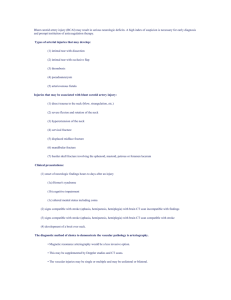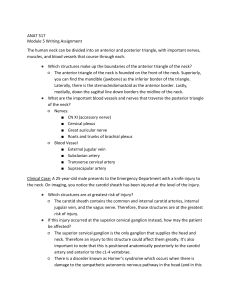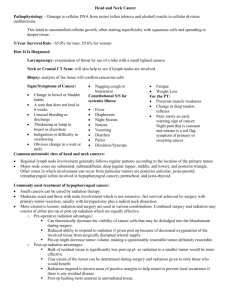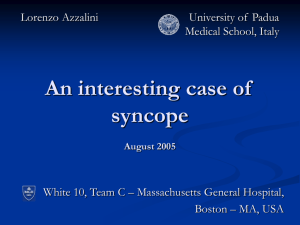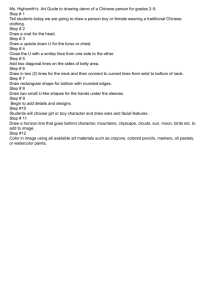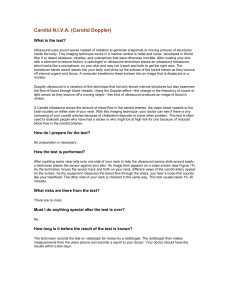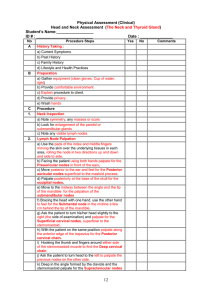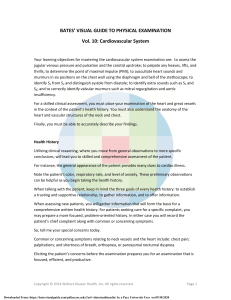Heart & Neck Vessel Assessment Lab Guide
advertisement
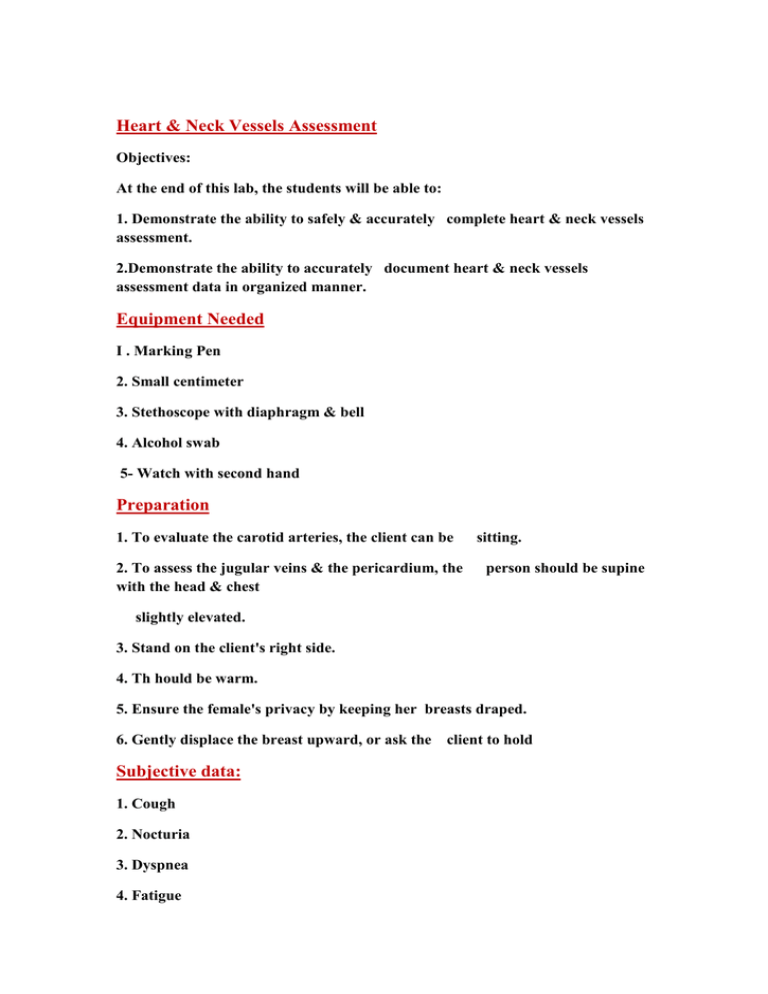
Heart & Neck Vessels Assessment Objectives: At the end of this lab, the students will be able to: 1. Demonstrate the ability to safely & accurately complete heart & neck vessels assessment. 2.Demonstrate the ability to accurately document heart & neck vessels assessment data in organized manner. Equipment Needed I . Marking Pen 2. Small centimeter 3. Stethoscope with diaphragm & bell 4. Alcohol swab 5- Watch with second hand Preparation 1. To evaluate the carotid arteries, the client can be 2. To assess the jugular veins & the pericardium, the with the head & chest sitting. person should be supine slightly elevated. 3. Stand on the client's right side. 4. Th hould be warm. 5. Ensure the female's privacy by keeping her breasts draped. 6. Gently displace the breast upward, or ask the client to hold Subjective data: 1. Cough 2. Nocturia 3. Dyspnea 4. Fatigue 5. Past cardiac history 6. Orothopnea 7. Cyanosis or pallor 8. Family cardiac history 9. Edema 10.Chest pain 1 1. Personal habits The Neck Vessels Palpate the carotid artery - Palpate each carotid artery medial to the sternomastoid muscle in the neck. - Avoid excessive pressure on the carotid sinus area. - Palpate gently. - Palpate only one carotid artery at a time. - Feel the contour & amplitude of the pulse. - Compromise finding to the other side. Normal finding : Contour is smooth with rapid upstroke & slower down stroke. Strength is 2+ or moderate. Findings should be same bilaterally Auscultation of the carotid artery - Keep the neck in a neutral position. - Lightly apply the bell of the stethoscope over the carotid artery at three levels: o Angle of jaw. o Mid – line area. o Base of the neck. - Ask the client to take a breath. Exhale & hold it briefly while you listen. Normally no sound present Inspect the Jugular Venous Pulse - Put the client in supine position anywhere from 30-40 degree angle. - Remove the pillow to avoid flexing of the neck. - Turn the client's head slightly away from the examined side. - Direct strong light onto the neck. - Note the external jugular veins overlying the stemomastoid muscle. - Look for pulsation of internal jugular veins in the area of suprasternal notch Internal jugular vein pulsations 3cm above sternal angel Palpate the Apical impulse: - localize the apical impulse using one finger pad. Ask the client to "exhale & then hold". - Role the client midway to the left. - Note the following: Location Size Amplitude Duration Apical impulse occupy only one Intercostal space, the 5*, & be at or medial to the MCL. *2cm. Note: apical impulse is not palpable in obese or in clients with thick chest wall.

